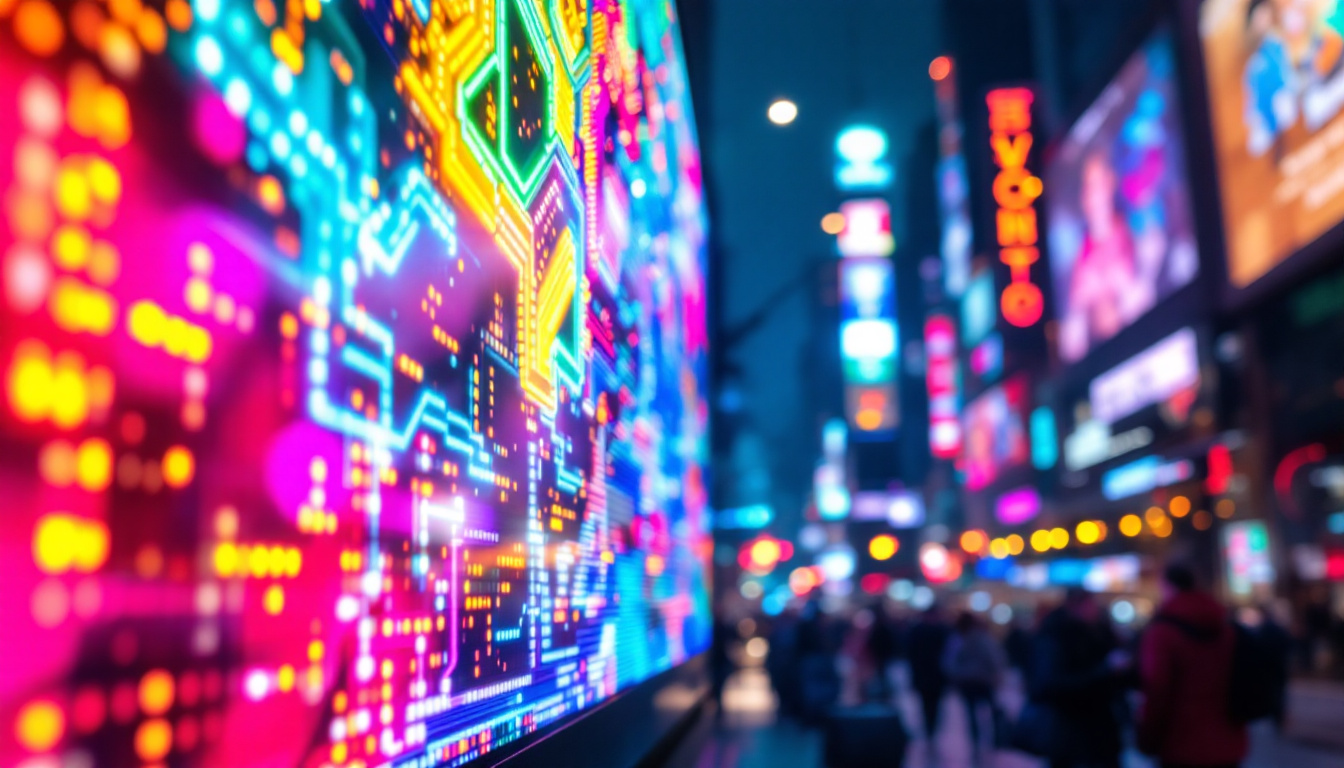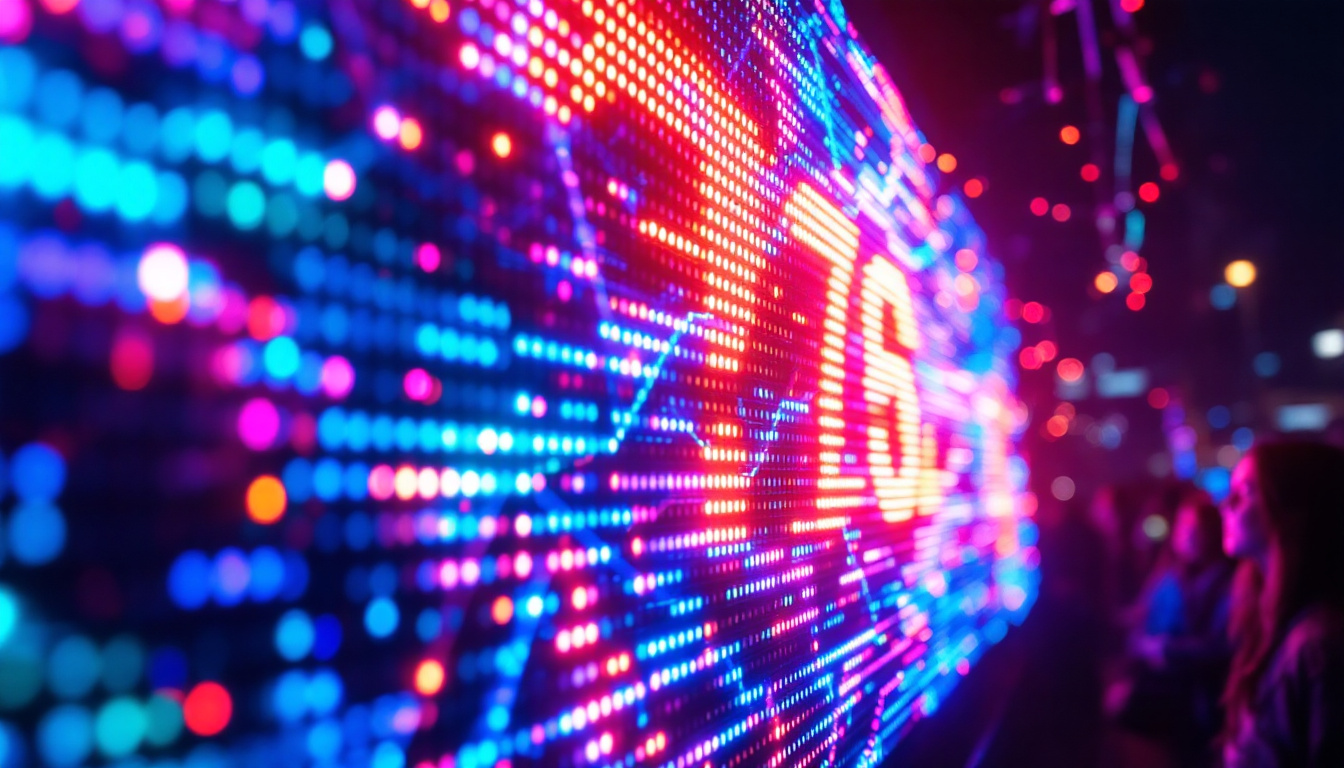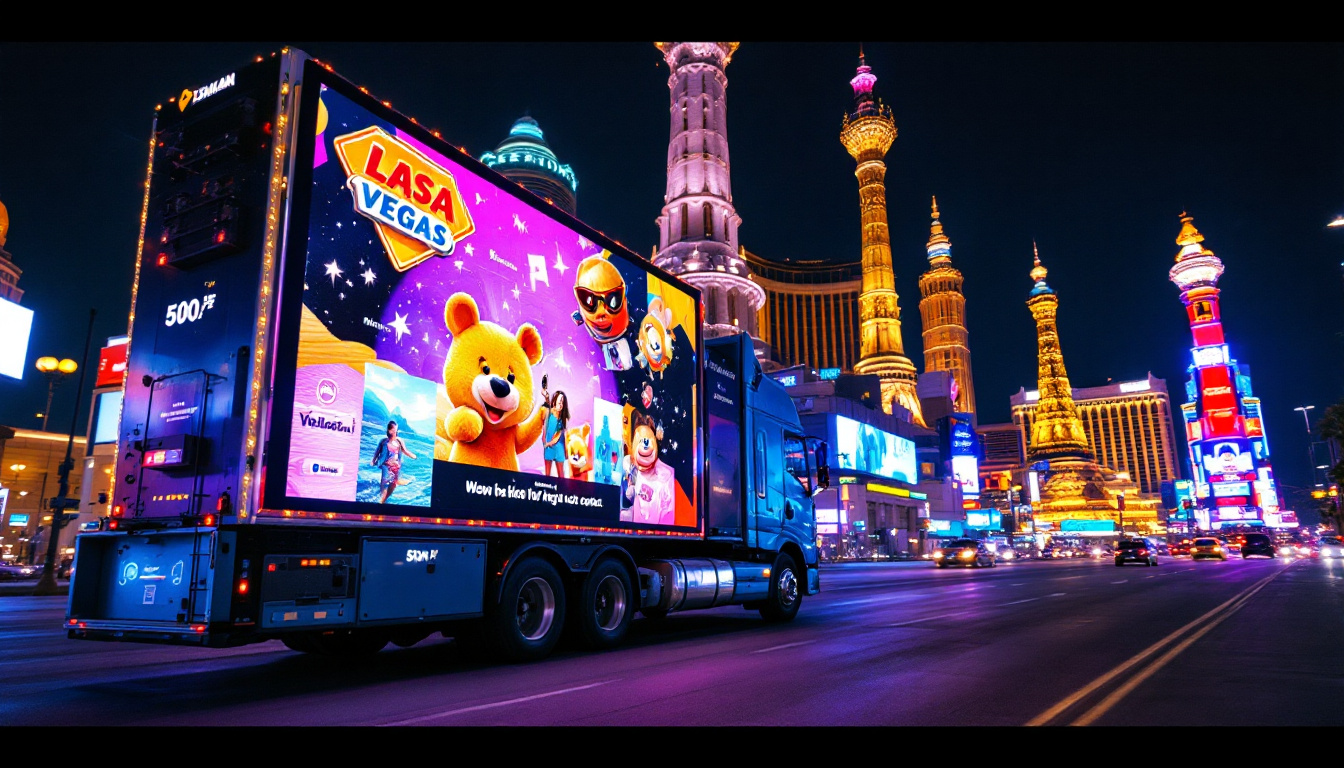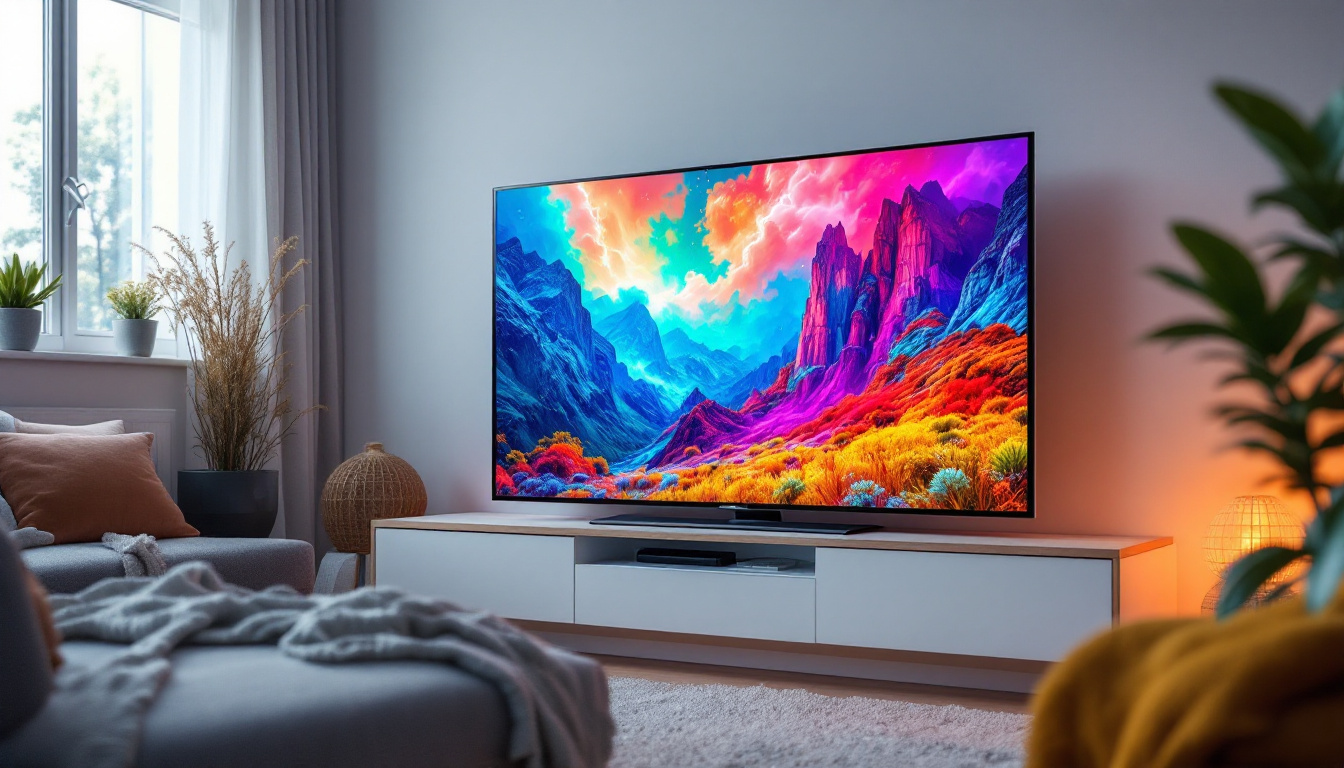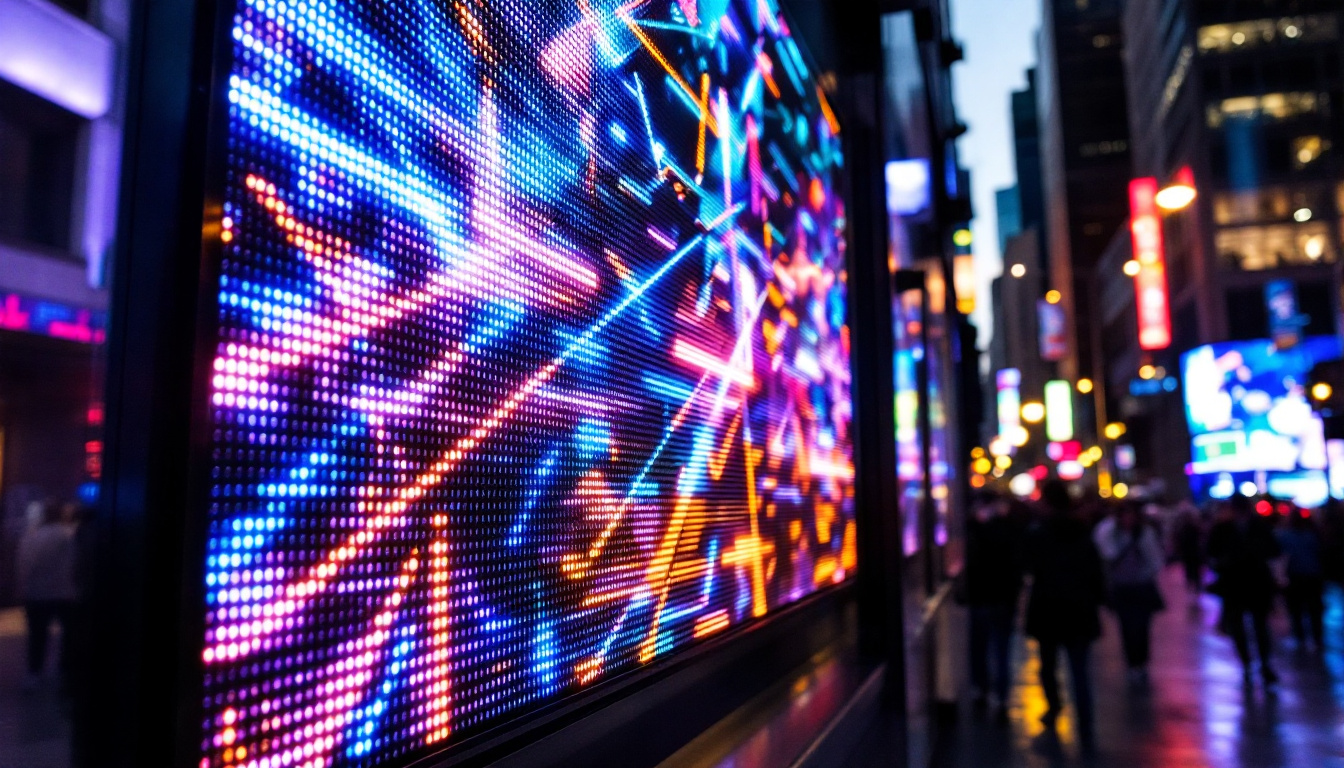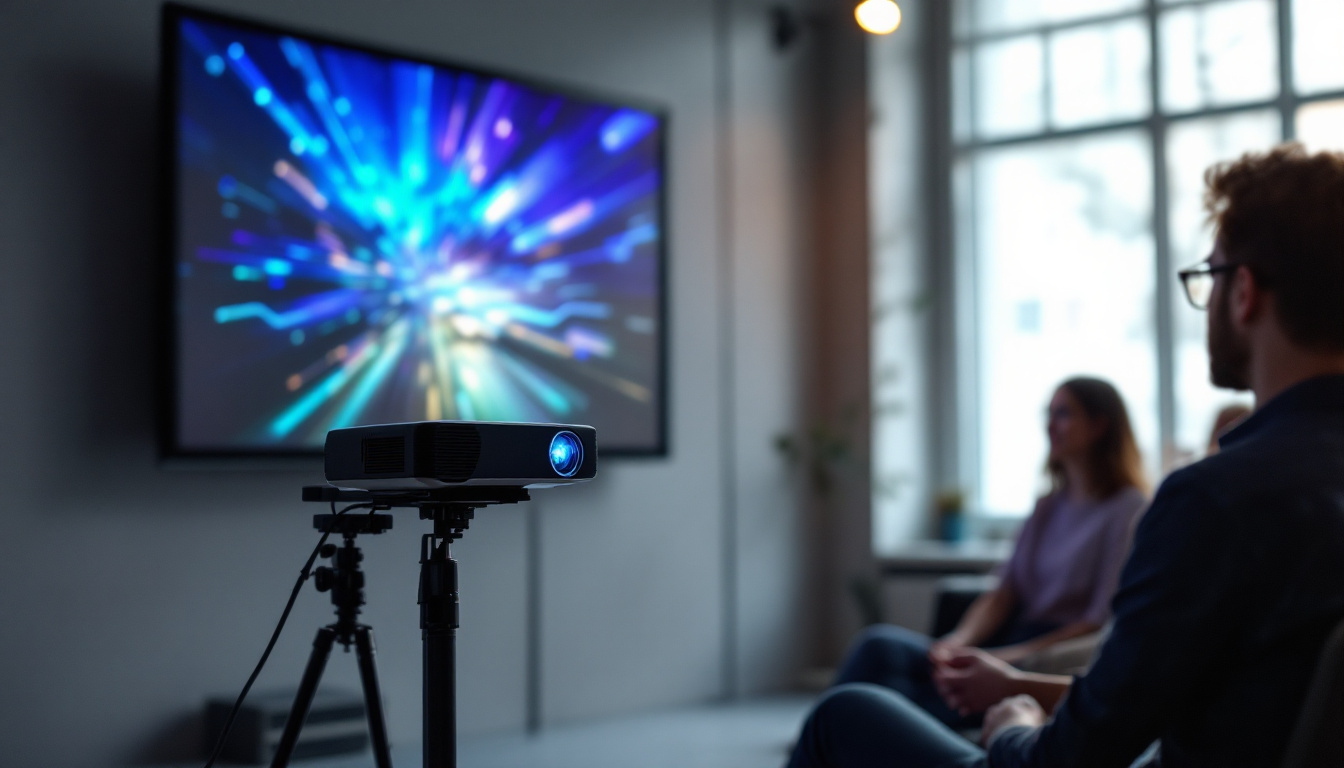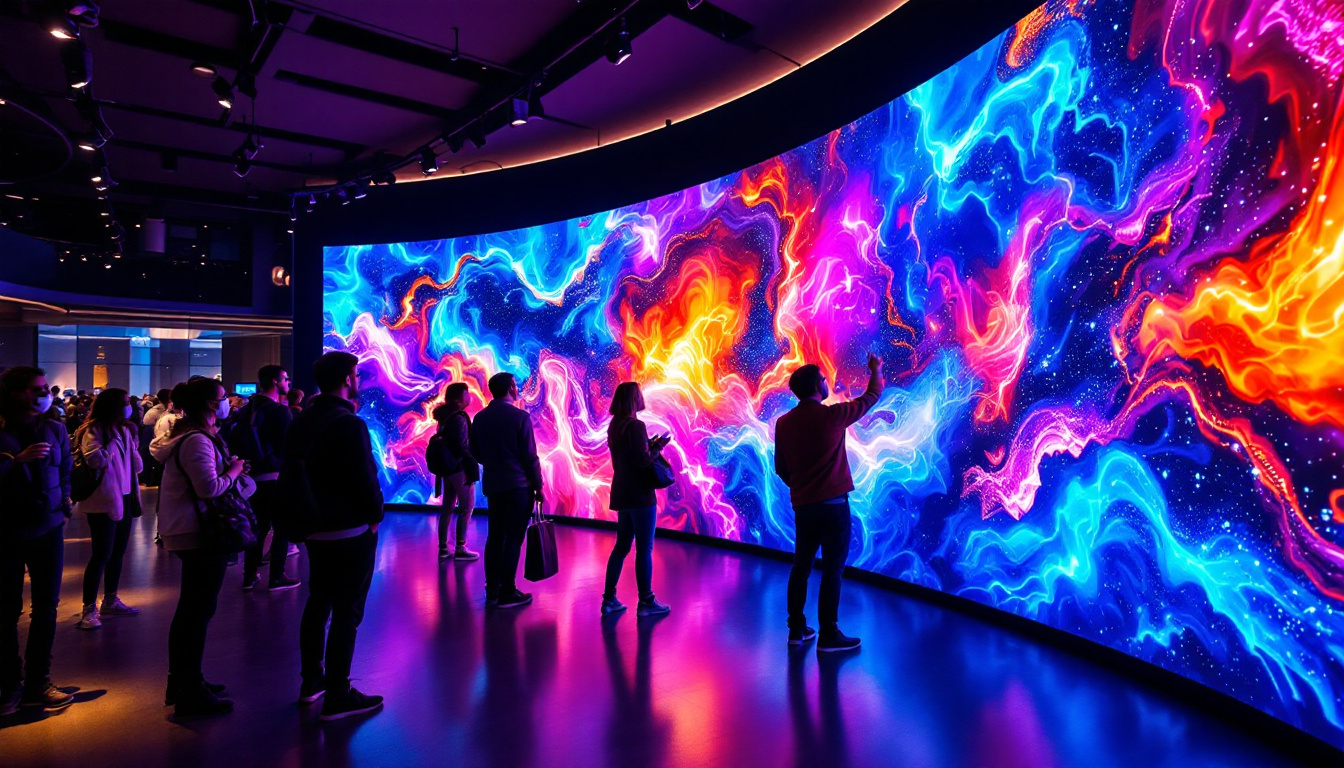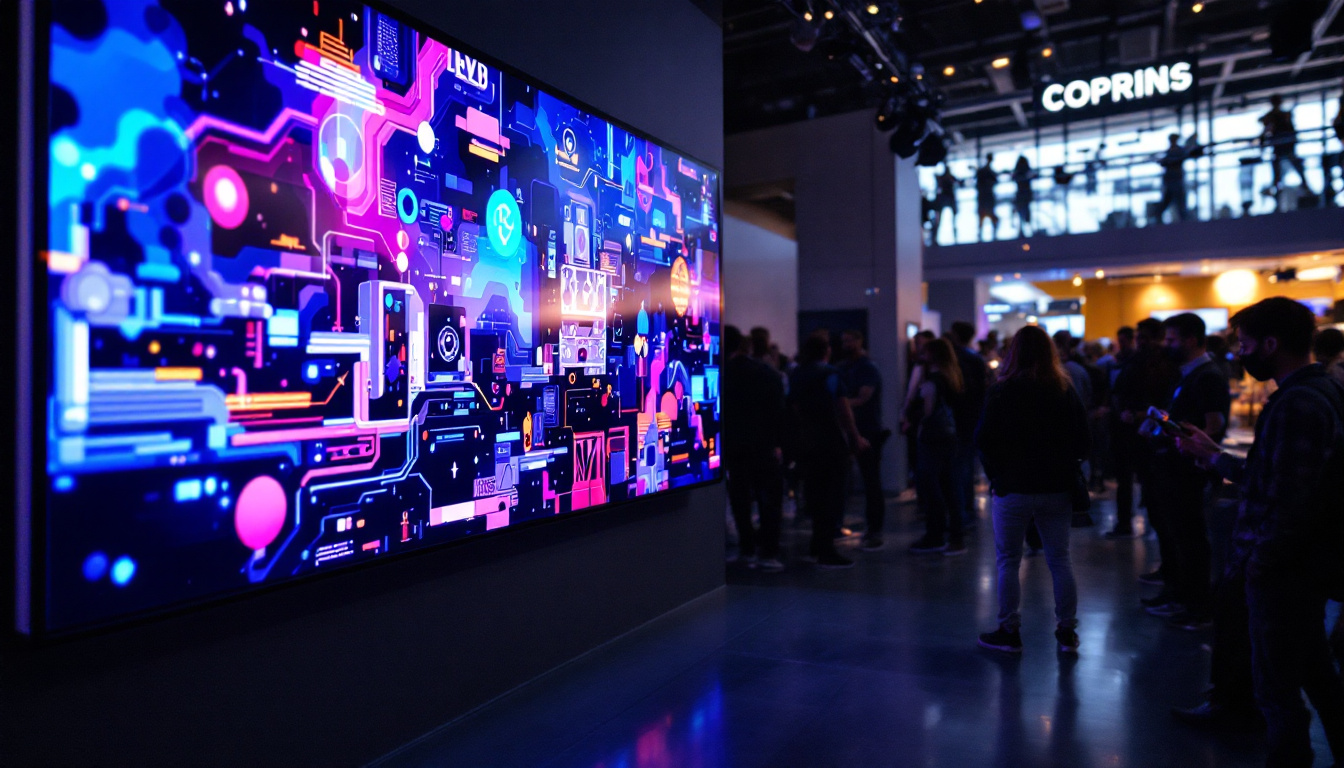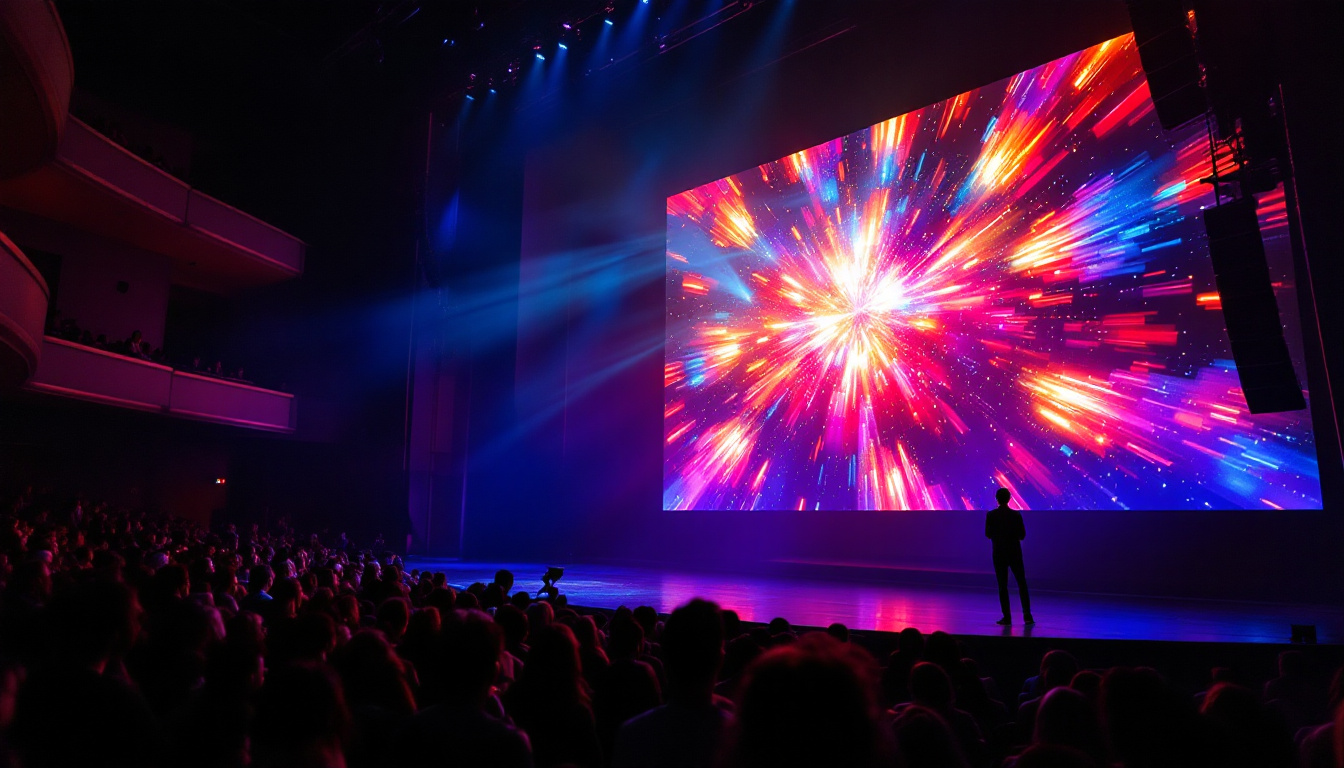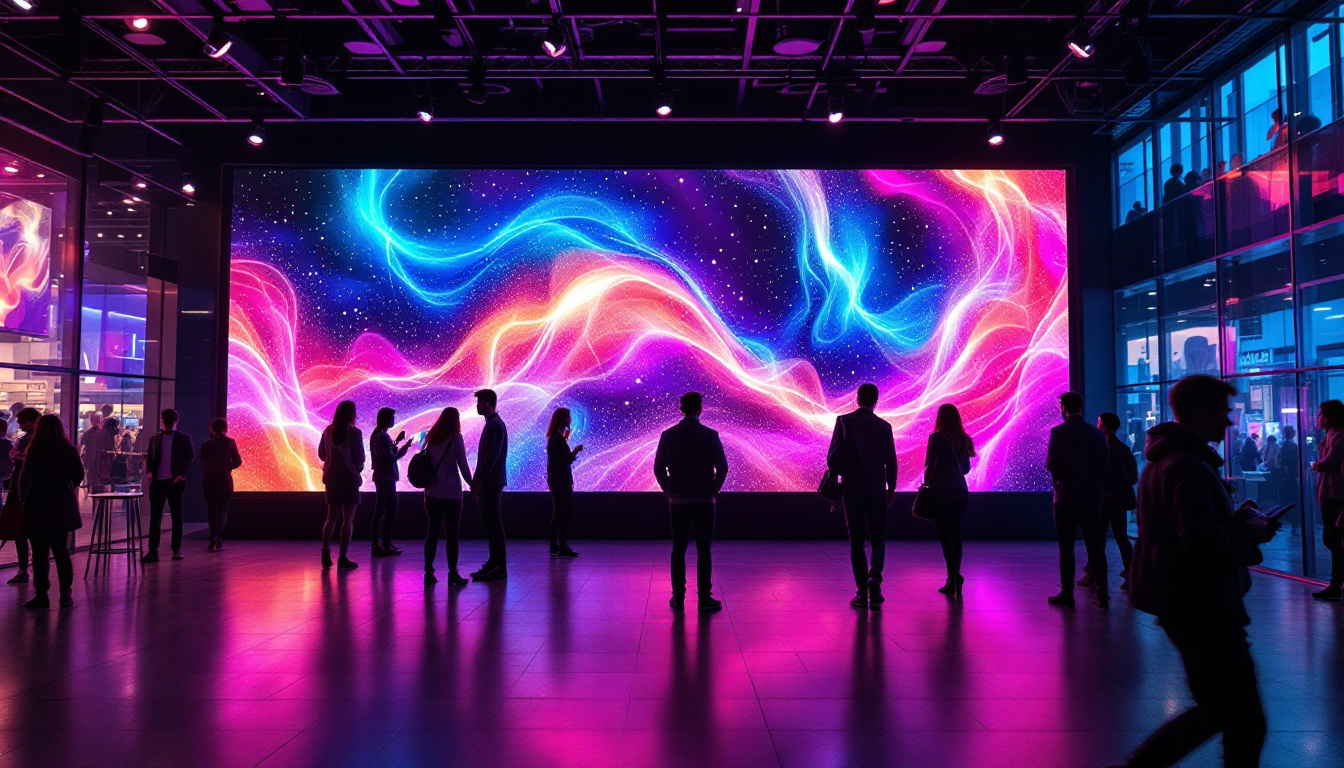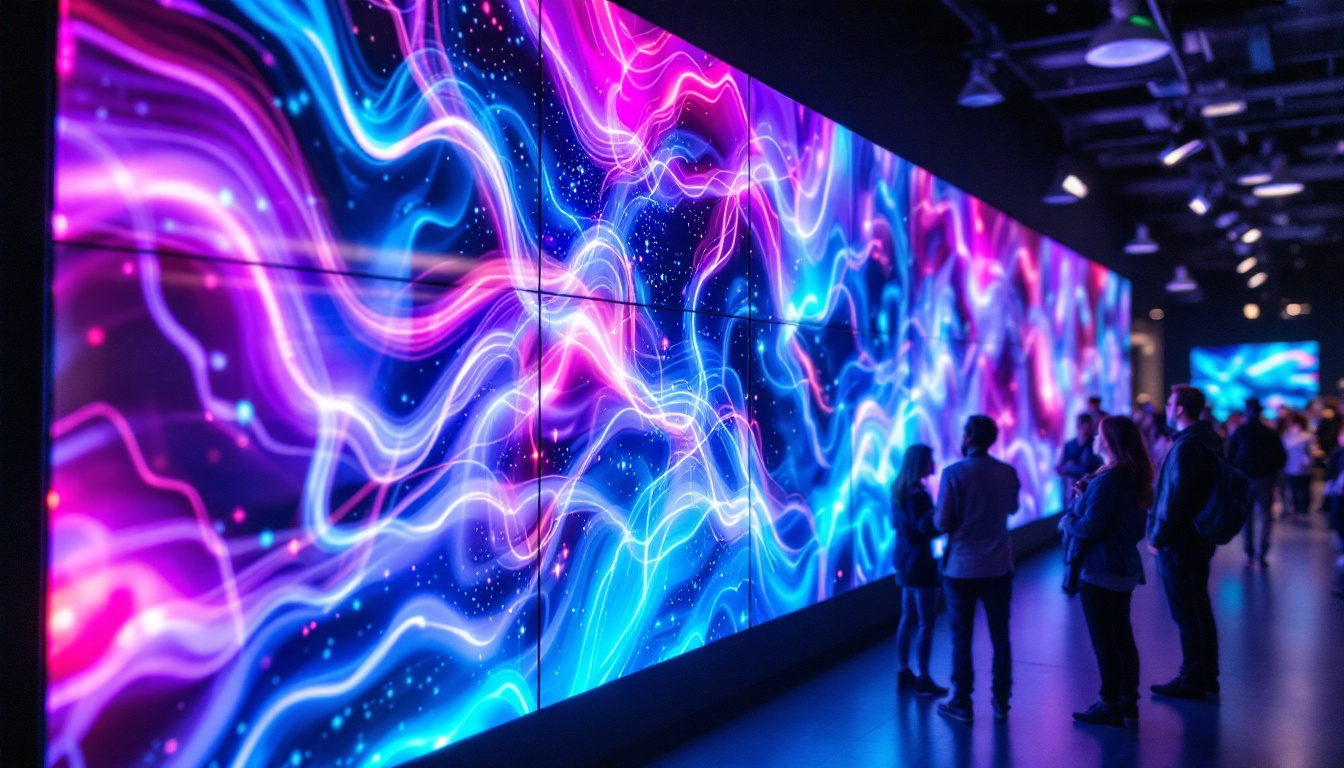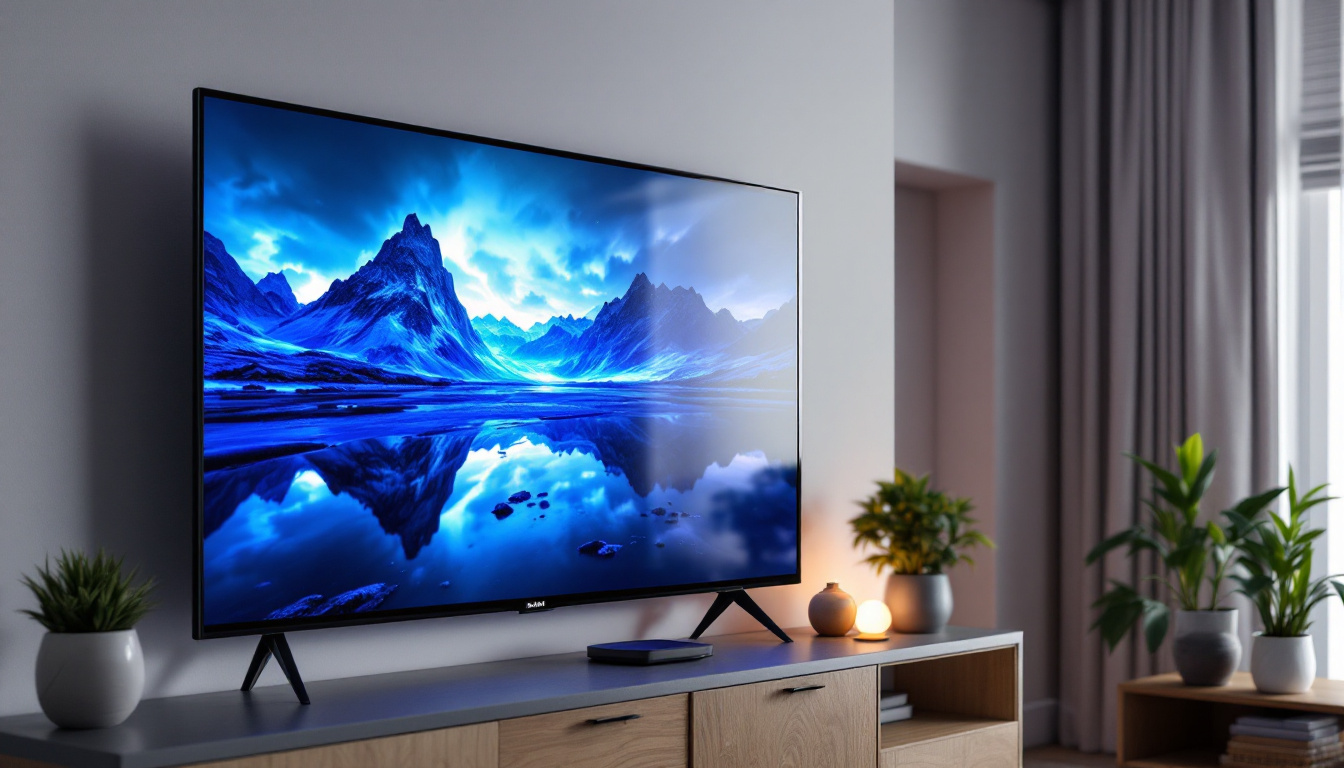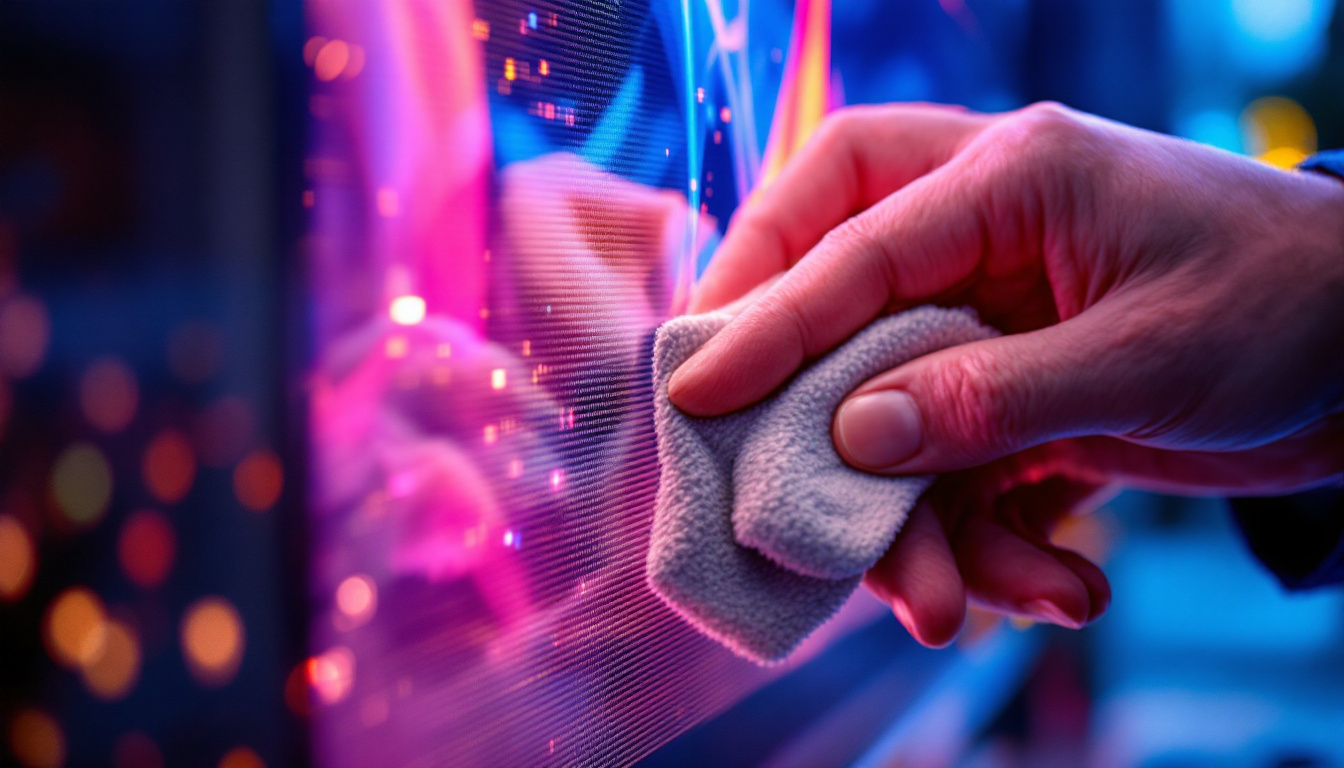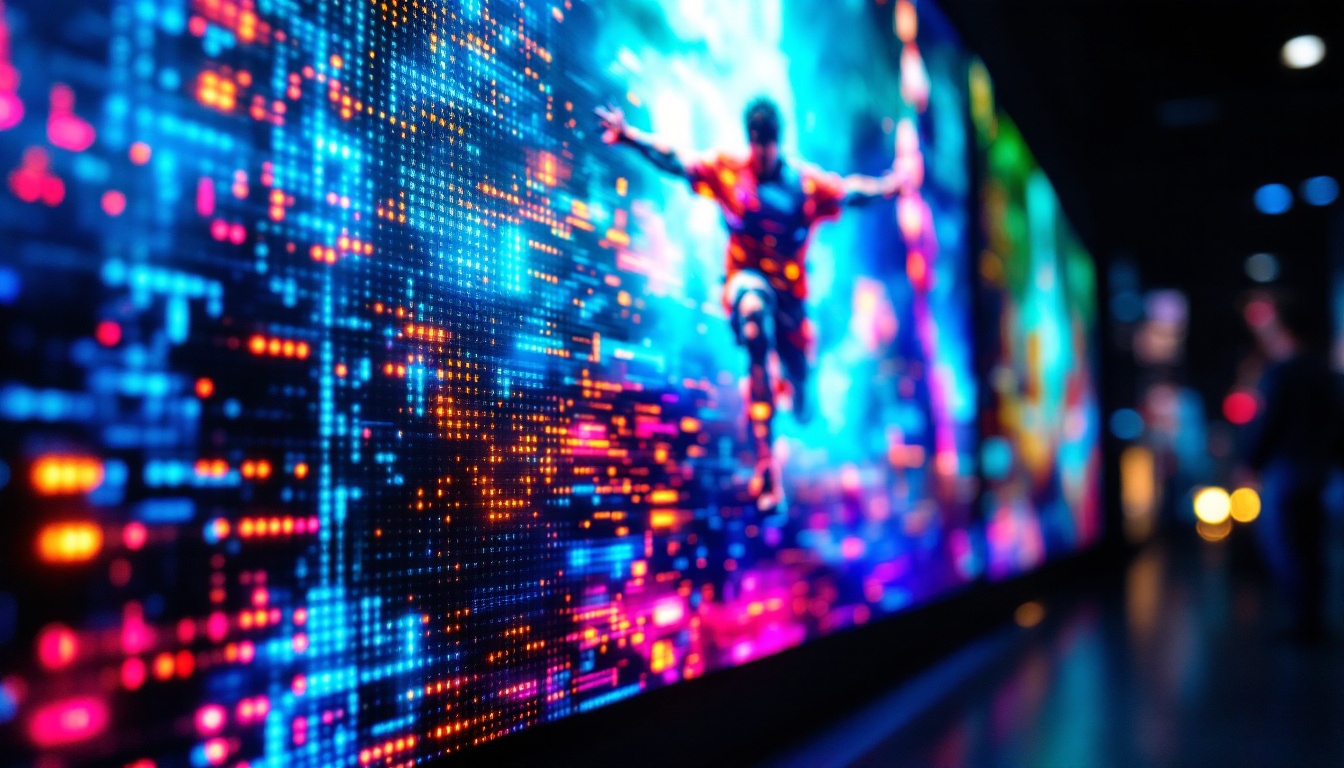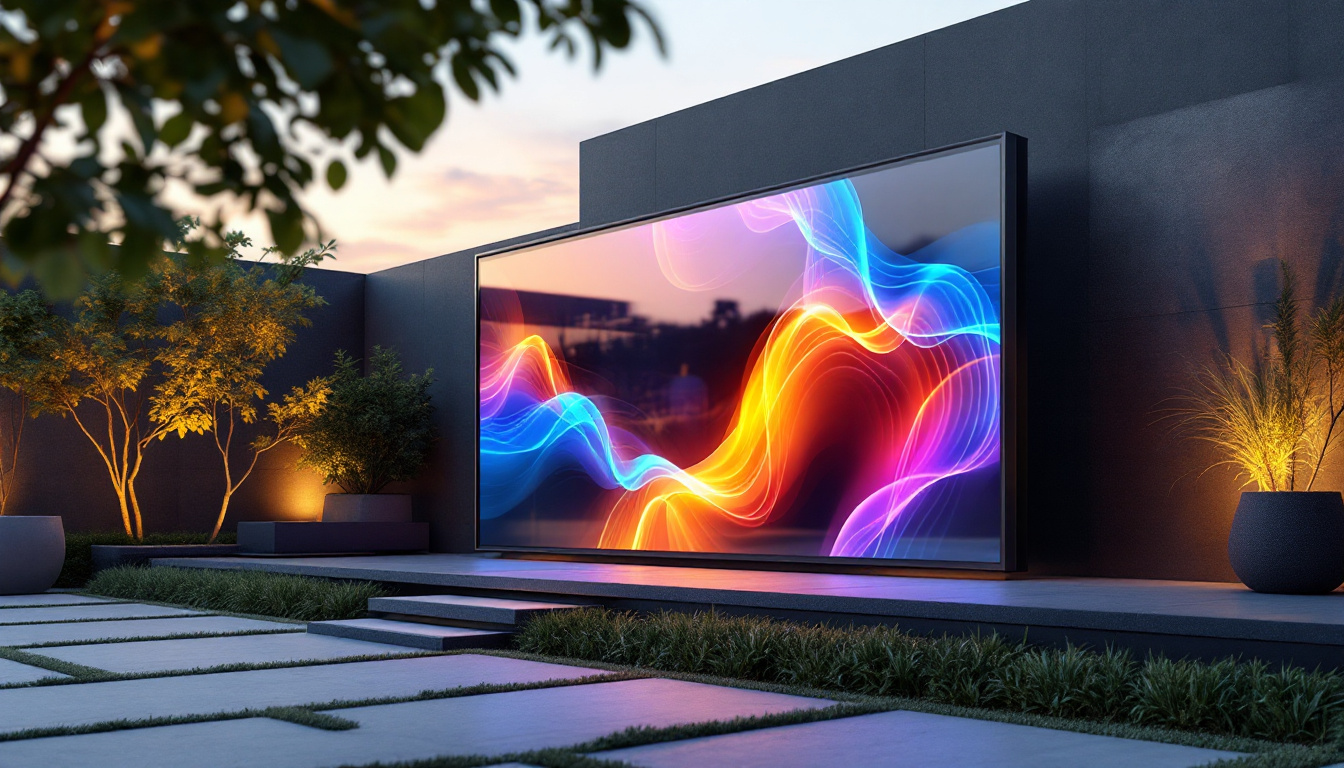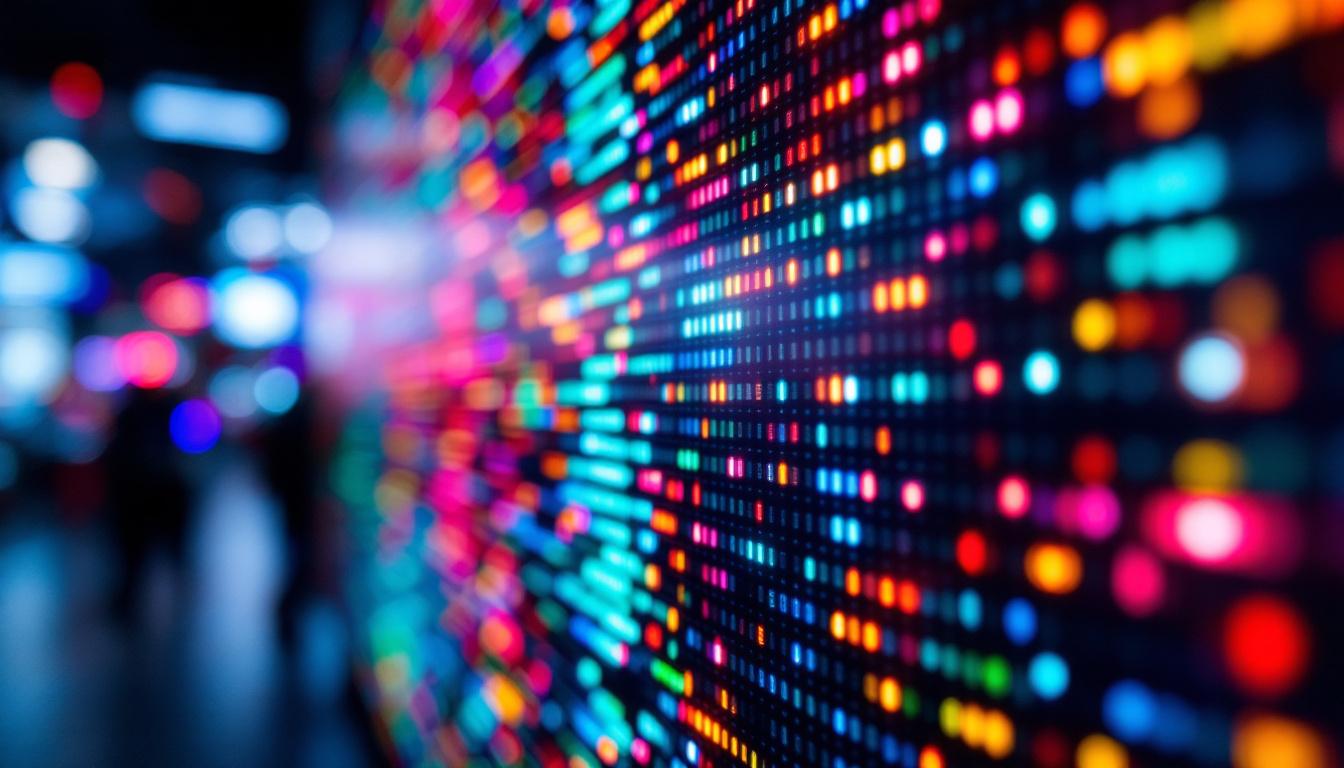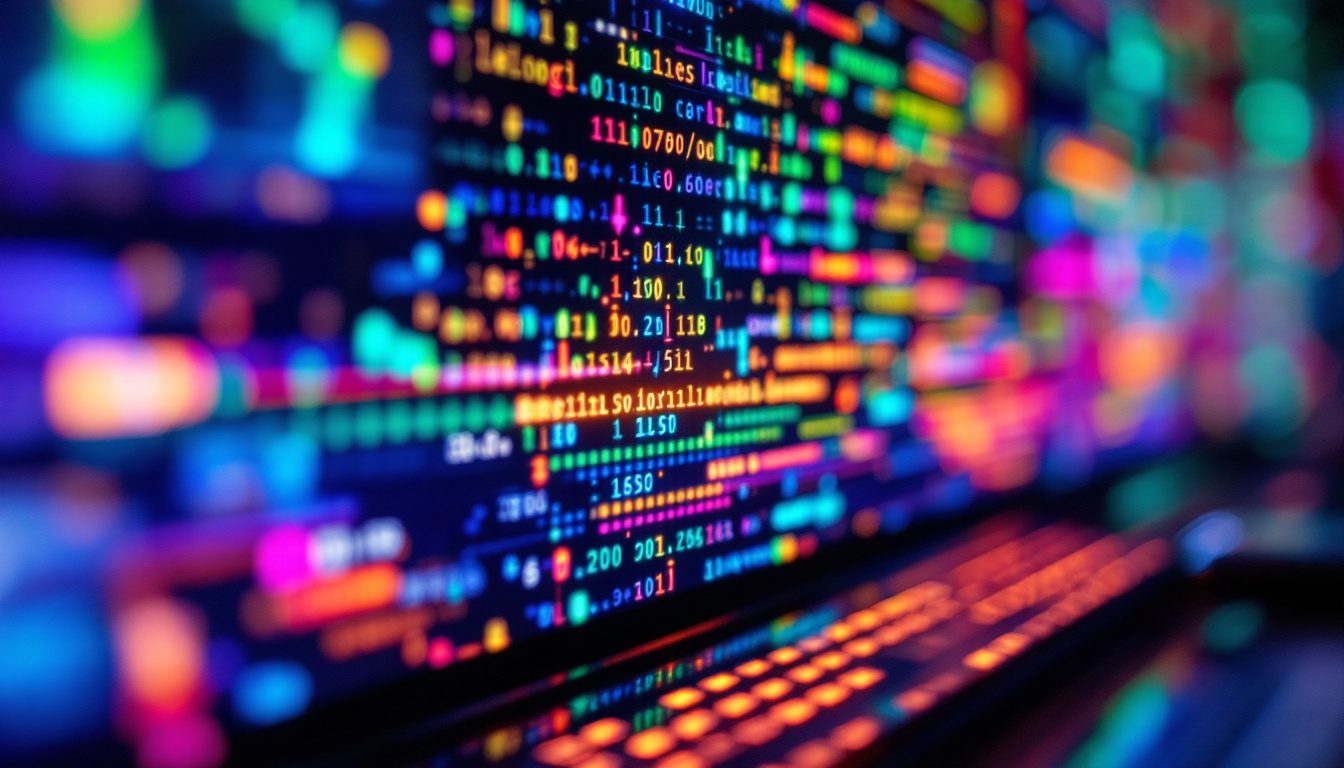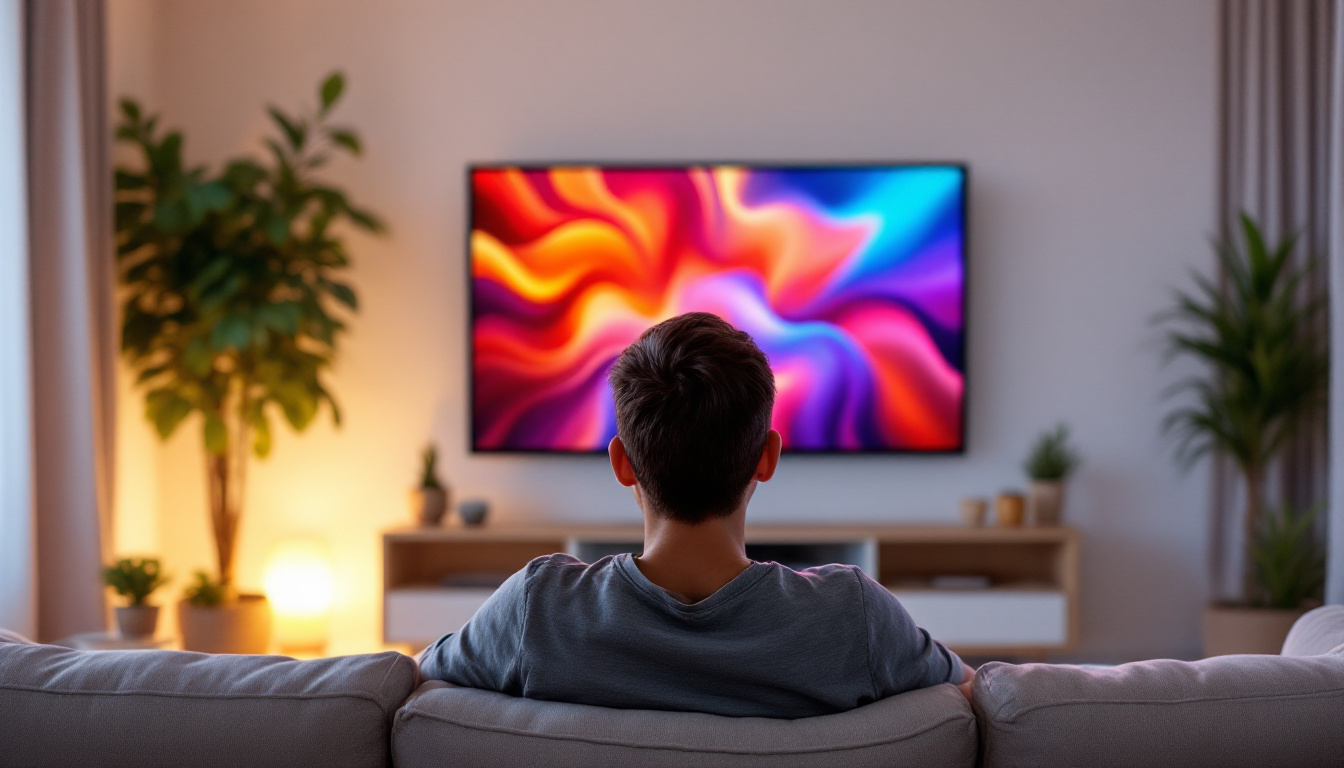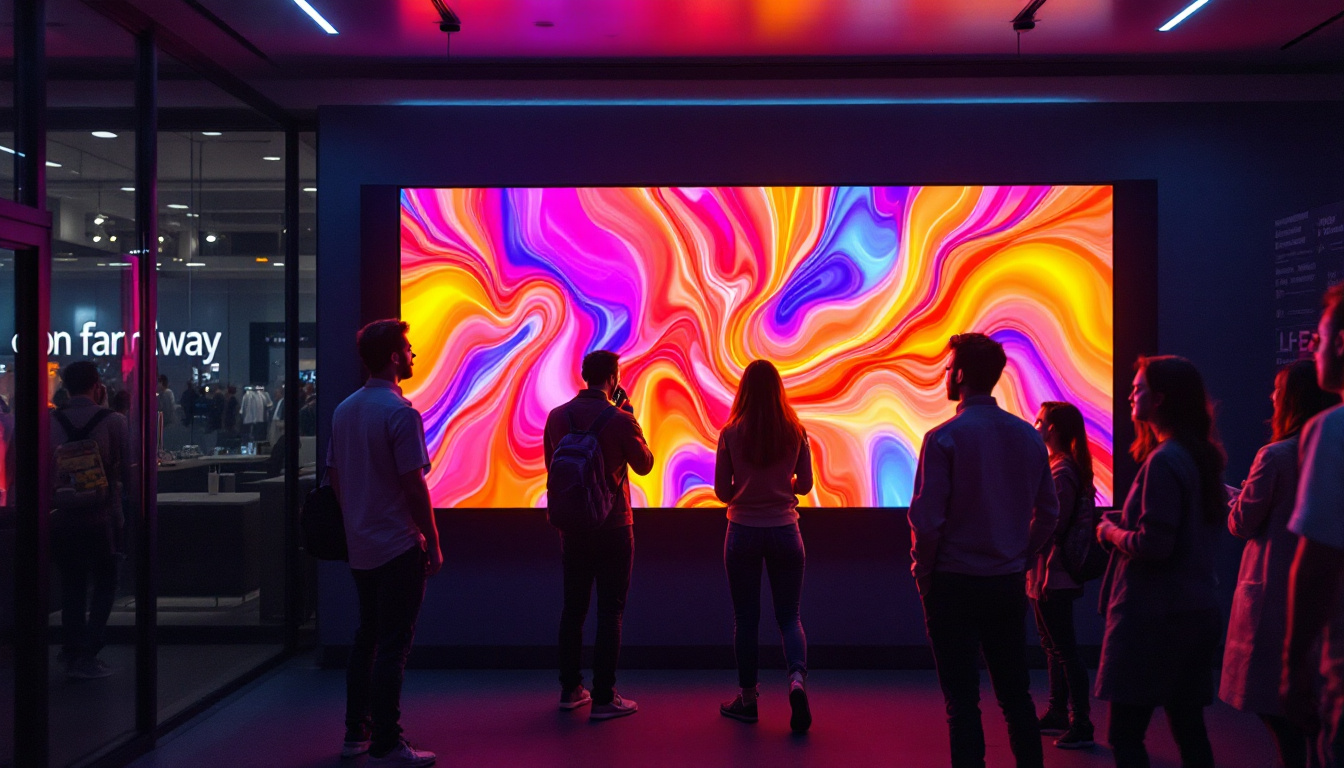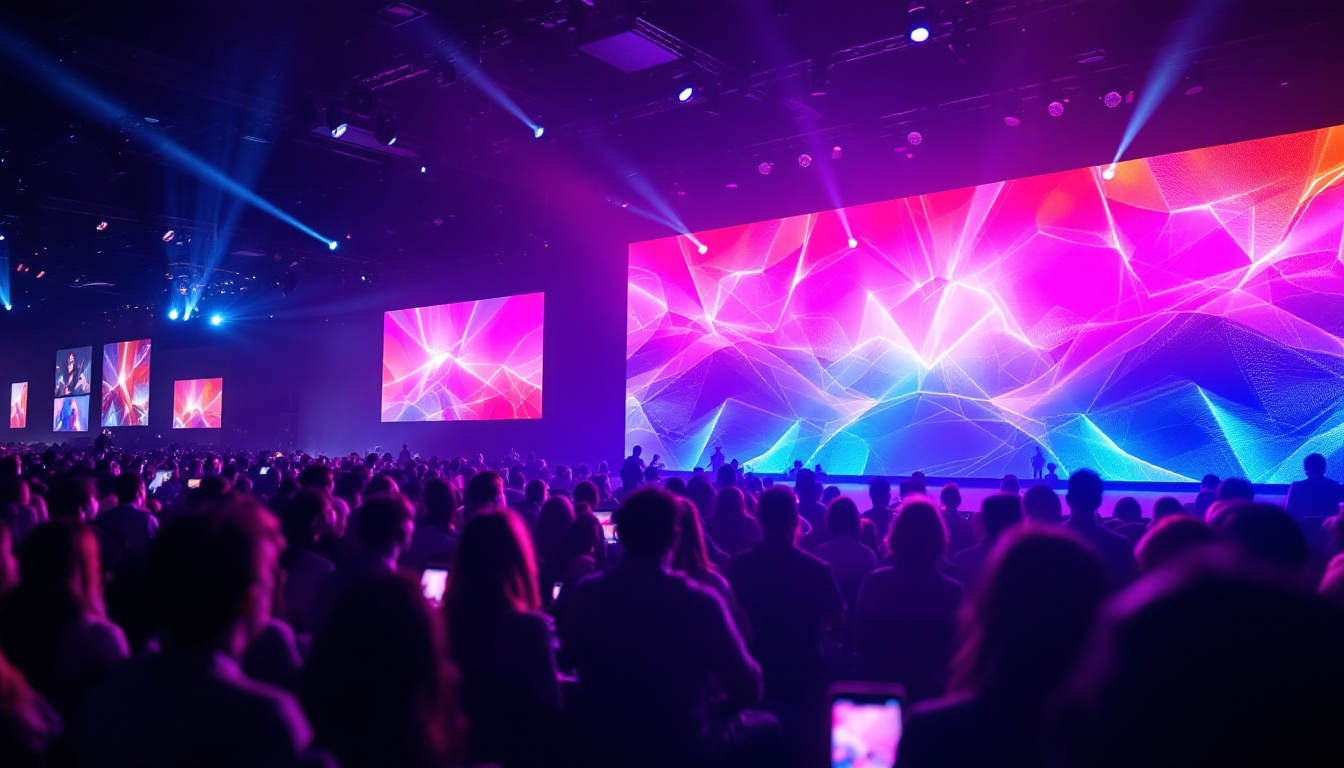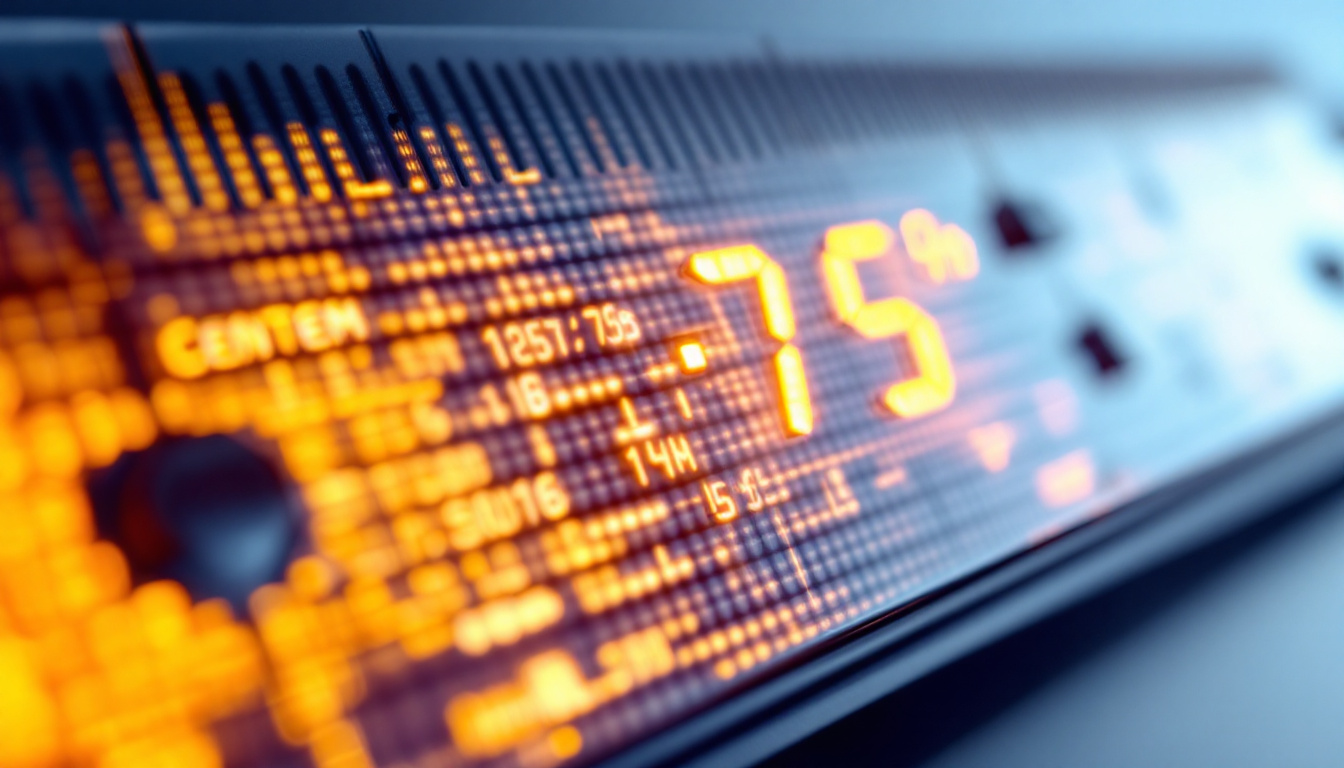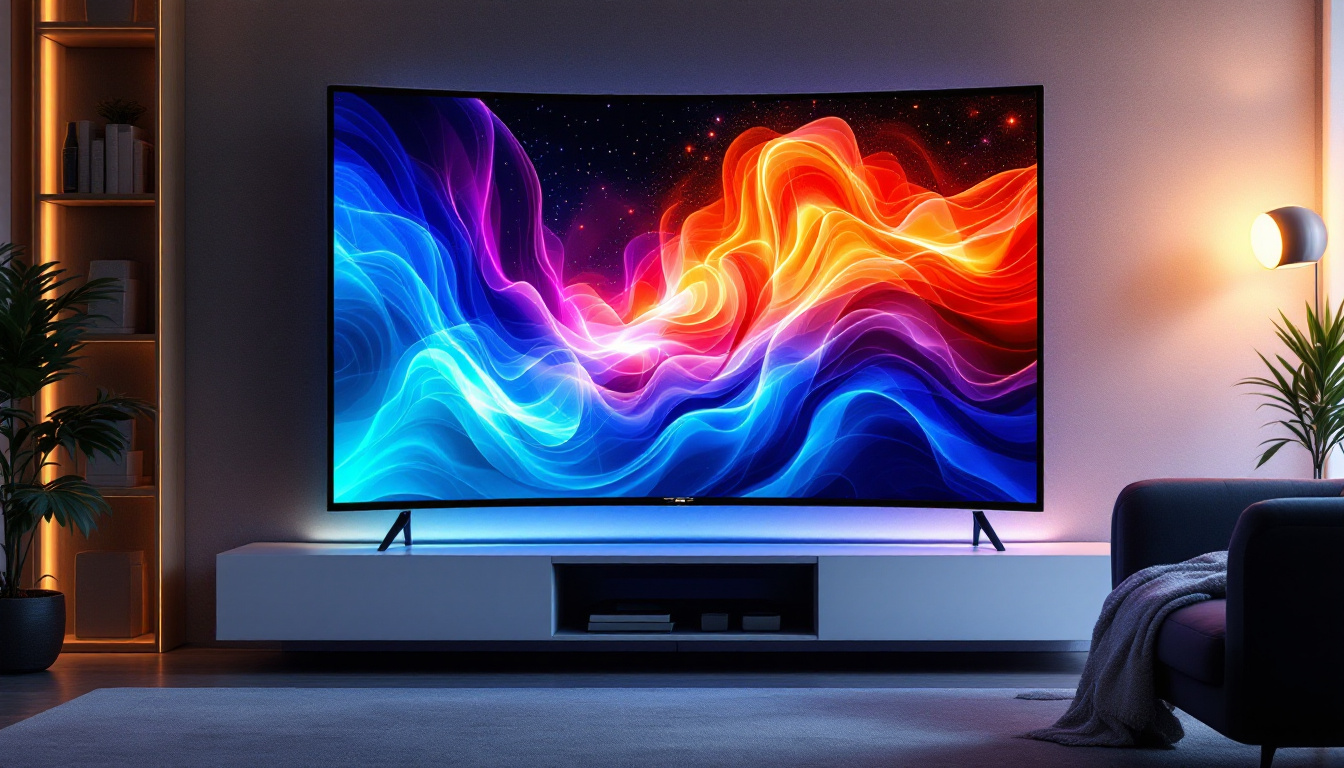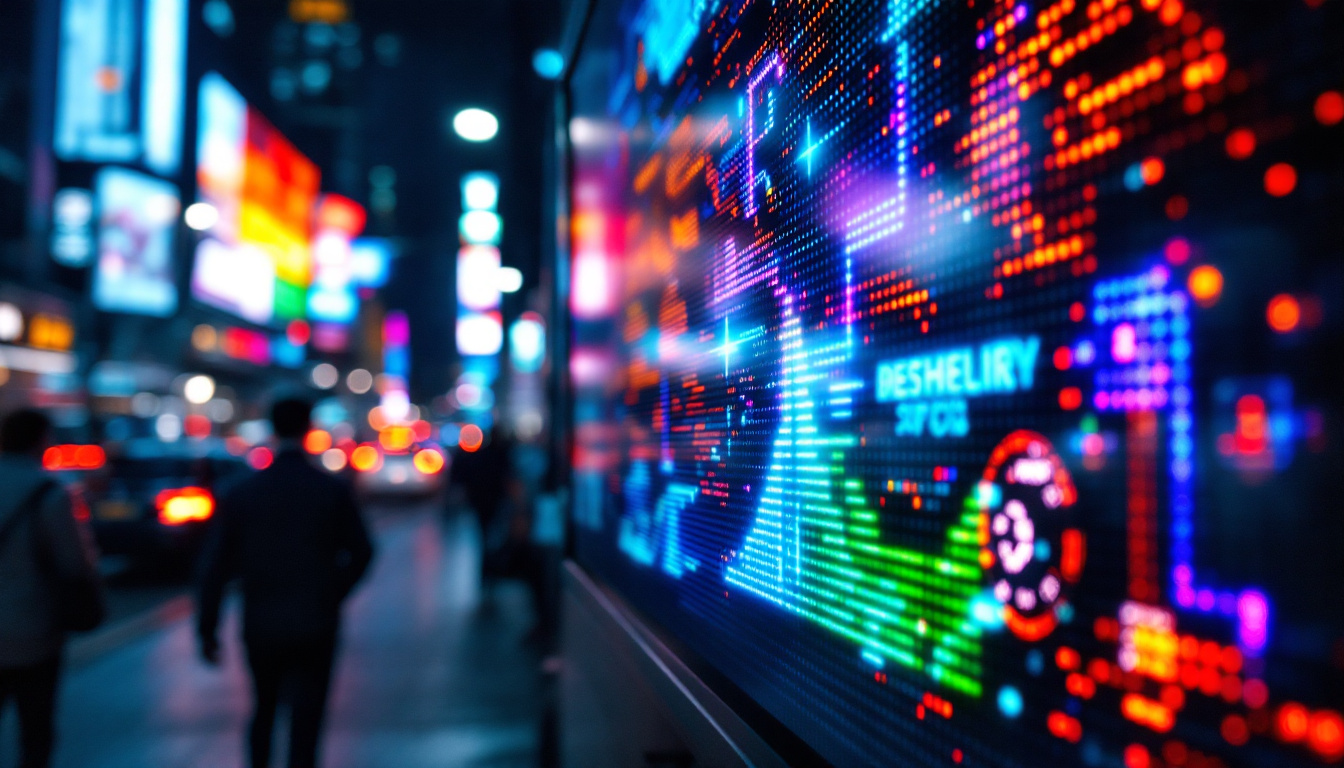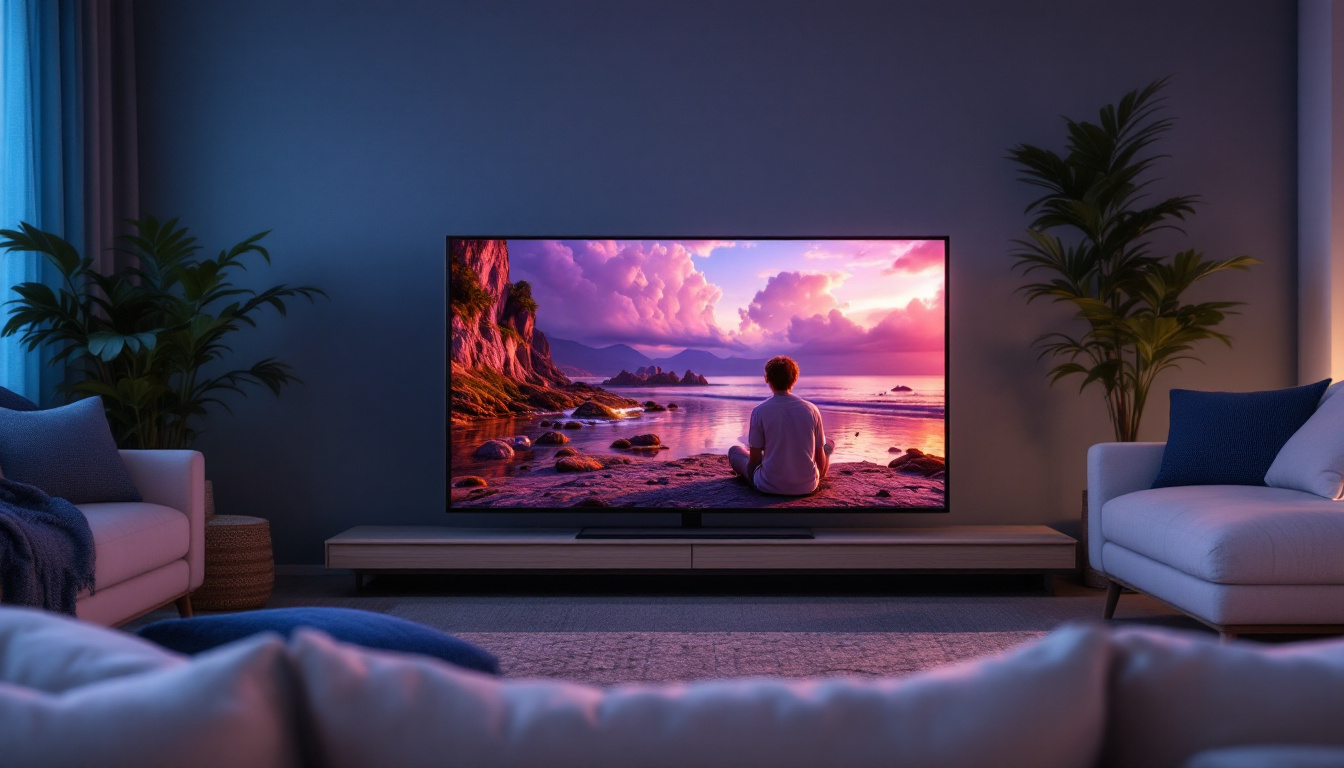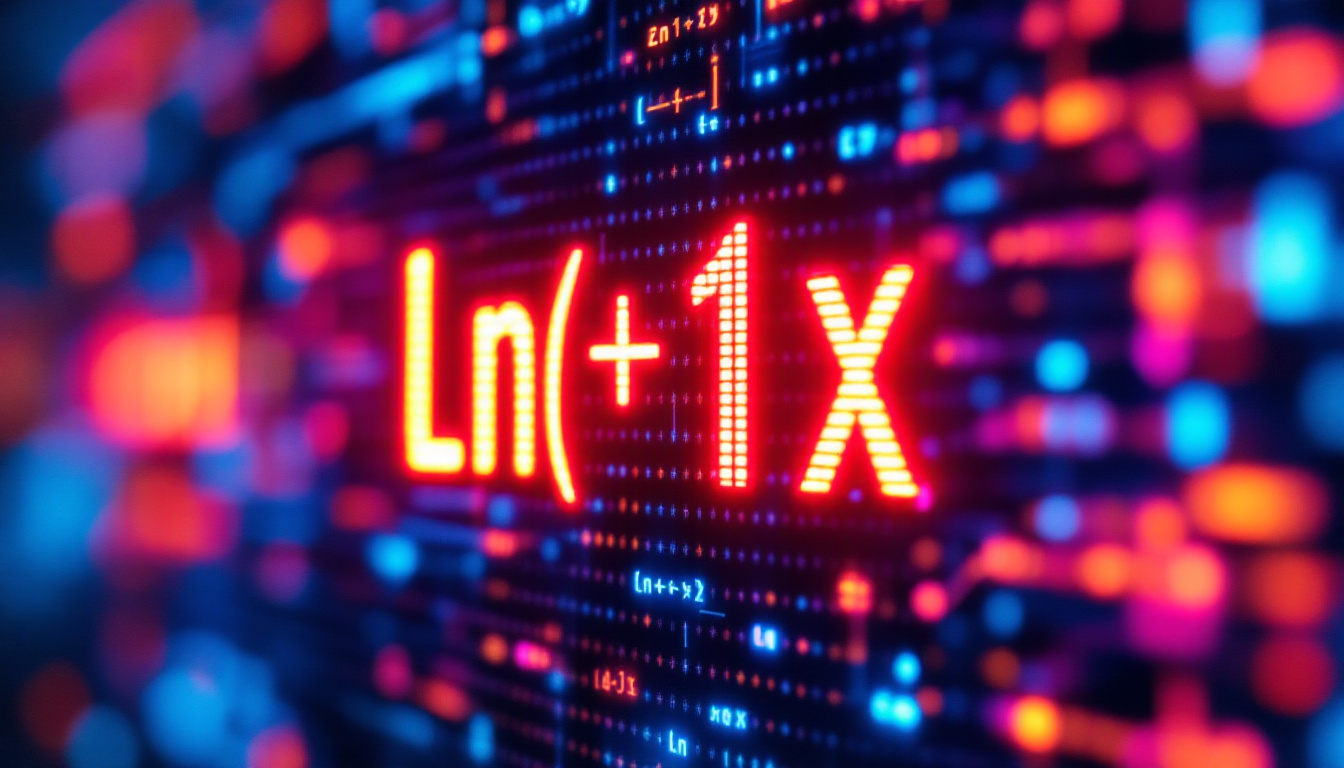In recent years, LED displays have become ubiquitous in our daily lives, from the screens of smartphones and televisions to large outdoor billboards. Their vibrant colors, energy efficiency, and versatility make them a popular choice for various applications. This article delves into the intricacies of LED display technology, exploring how it works, its advantages, and the different types available in the market.
Understanding LED Technology
Light Emitting Diodes (LEDs) are semiconductor devices that emit light when an electric current passes through them. This fundamental principle underpins the operation of LED displays, which consist of numerous tiny LEDs arranged in a matrix. Each LED can be individually controlled to produce a wide range of colors, allowing for the creation of dynamic images and videos. The versatility and efficiency of LEDs have made them a popular choice in various applications, from decorative lighting to complex digital signage.
The Basics of LED Operation
At its core, an LED display operates on the principle of electroluminescence. When electrons recombine with holes within the semiconductor material, energy is released in the form of photons, producing visible light. The color of the emitted light depends on the materials used in the semiconductor. For example, gallium nitride produces blue light, while gallium phosphide can produce green. By combining these different colors, a full spectrum of hues can be achieved. This ability to mix colors is crucial for applications such as video displays, where a lifelike representation of images is essential. Additionally, advancements in LED technology have led to the development of high-brightness LEDs, which are capable of producing vibrant colors even in well-lit environments.
Types of LED Displays
LED displays can be classified into several categories based on their construction and application. The most common types include:
- Direct View LED Displays: These displays consist of individual LEDs that form the entire image. They are often used in large outdoor screens and digital billboards.
- LED-backlit LCD Displays: These displays use LEDs to illuminate an LCD panel from behind, significantly improving brightness and color accuracy compared to traditional fluorescent backlighting.
- Organic LED (OLED) Displays: Utilizing organic compounds that emit light, OLED displays offer superior contrast and color reproduction. They are commonly found in high-end televisions and smartphones.
In addition to these common types, there are also specialized LED displays designed for specific applications. For instance, transparent LED displays are gaining popularity in retail environments, allowing for eye-catching advertisements while maintaining visibility through the glass. Furthermore, flexible LED displays are being developed, which can be bent or shaped to fit unconventional surfaces, opening new avenues for creative design in architecture and art installations. As technology continues to evolve, the potential applications for LED displays seem limitless, paving the way for innovative solutions in both commercial and residential settings.
Advantages of LED Displays
LED displays offer numerous advantages over traditional display technologies, making them a preferred choice in various settings. Understanding these benefits can help consumers and businesses make informed decisions when selecting display solutions.
Energy Efficiency
One of the most significant advantages of LED displays is their energy efficiency. Compared to older technologies like incandescent bulbs and traditional LCDs, LEDs consume significantly less power. This not only reduces electricity bills but also minimizes the environmental impact associated with energy consumption. Furthermore, the lower energy usage contributes to a smaller carbon footprint, aligning with the growing emphasis on sustainability in both personal and corporate practices.
Longevity and Durability
LEDs are known for their long lifespan, often lasting up to 100,000 hours or more. This durability translates to lower maintenance costs and fewer replacements, making LED displays a cost-effective solution in the long run. Additionally, they are more resistant to shock and vibrations, which is particularly beneficial for outdoor applications. This resilience means that LED displays can withstand harsh weather conditions, making them ideal for outdoor advertising and public information displays, where reliability is crucial.
Brightness and Color Quality
The brightness of LED displays is another standout feature. They can produce vibrant colors and high levels of brightness, making them suitable for various lighting conditions, including direct sunlight. The ability to produce a wide color gamut enhances the visual experience, whether in a commercial setting or at home. Moreover, advancements in LED technology have led to improved color accuracy and consistency, ensuring that images and videos appear as intended across different viewing angles. This is particularly important in applications such as digital signage, where the clarity and appeal of the content can significantly influence consumer engagement.
Versatility and Customization
Another compelling advantage of LED displays is their versatility and the potential for customization. They can be manufactured in various sizes and shapes, enabling creative installations that cater to specific needs and environments. From large-scale video walls in stadiums to sleek, curved displays in retail spaces, the adaptability of LED technology allows for innovative design solutions. Additionally, many LED systems support dynamic content, enabling businesses to update their messaging in real-time, which can be particularly effective for promotions and events.
Low Heat Emission
LED displays also generate less heat compared to traditional display technologies. This characteristic not only contributes to energy savings but also enhances the longevity of the display itself, as excessive heat can lead to component degradation over time. The cooler operation of LEDs means that they can be used in enclosed spaces without the need for extensive cooling systems, further simplifying installation and reducing overall operational costs. This feature is especially advantageous in environments where temperature control is critical, such as in museums or art galleries, where delicate items must be preserved under optimal conditions.
Applications of LED Displays
LED displays are versatile and can be found in a wide range of applications. Their adaptability has made them a popular choice across different industries, from entertainment to advertising.
Advertising and Marketing
In the advertising sector, LED displays have revolutionized how brands communicate with consumers. Digital billboards and signage can be easily updated with new content, allowing businesses to promote products and services in real-time. This flexibility enhances engagement and can lead to higher conversion rates.
Entertainment and Events
LED technology is prevalent in the entertainment industry, particularly in concerts, theaters, and sporting events. Large LED screens are used to display live feeds, graphics, and advertisements, creating an immersive experience for attendees. The ability to create stunning visuals has transformed how events are produced and experienced.
Residential Use
In homes, LED displays are commonly used in televisions and computer monitors. The superior picture quality and energy efficiency make them an attractive option for consumers. Moreover, smart TVs often incorporate LED technology, providing access to streaming services and interactive features.
Challenges and Considerations
While LED displays offer numerous benefits, there are also challenges and considerations that consumers and businesses should keep in mind. Understanding these factors can aid in making informed decisions regarding LED technology.
Initial Cost
One of the primary drawbacks of LED displays is their initial cost. While prices have decreased over the years, high-quality LED displays can still be more expensive than traditional display technologies. However, the long-term savings in energy costs and maintenance can offset this initial investment.
Viewing Angles
Another consideration is the viewing angle of LED displays. While many modern LED displays offer wide viewing angles, some lower-quality models may suffer from color distortion or reduced brightness when viewed from the side. It is essential to consider the intended viewing environment when selecting an LED display.
Heat Generation
LED displays can generate heat during operation, especially in larger installations. Proper ventilation and cooling solutions may be necessary to prevent overheating, particularly in enclosed spaces. Addressing heat management is crucial to ensure optimal performance and longevity.
Future of LED Technology
The future of LED technology looks promising, with continuous advancements in research and development. Innovations are expected to enhance the performance, efficiency, and applications of LED displays.
MicroLED and MiniLED Technologies
Emerging technologies such as MicroLED and MiniLED are set to redefine the display landscape. MicroLED displays consist of tiny individual LEDs that can create stunning images with exceptional brightness and contrast. MiniLED technology, on the other hand, improves traditional LCDs by utilizing smaller LEDs for backlighting, resulting in better contrast and color accuracy.
Integration with Smart Technology
As smart technology continues to evolve, LED displays are increasingly being integrated into smart home systems. This integration allows for seamless control of lighting, entertainment, and information displays, enhancing the overall user experience. Future developments may lead to even more interactive and personalized display solutions.
Sustainability Initiatives
With growing concerns about environmental impact, manufacturers are focusing on sustainability initiatives. This includes developing energy-efficient products, utilizing recyclable materials, and implementing eco-friendly manufacturing processes. As sustainability becomes a priority, the LED display industry is likely to see significant advancements in this area.
Conclusion
LED display technology has transformed how information is conveyed and experienced across various sectors. With their energy efficiency, durability, and vibrant color quality, LED displays have become an integral part of modern life. While challenges exist, ongoing innovations and advancements promise to enhance the capabilities and applications of LED technology in the future.
As consumers and businesses continue to explore the possibilities of LED displays, understanding the technology’s fundamentals, benefits, and potential challenges will be essential. Whether for advertising, entertainment, or residential use, LED displays are set to remain at the forefront of visual technology for years to come.
Explore Cutting-Edge LED Displays with LumenMatrix
Ready to elevate your visual experience with the latest in LED display technology? LumenMatrix is at the forefront of innovation, offering a wide array of LED display solutions tailored to meet your needs. From captivating Indoor LED Wall Displays to dynamic Outdoor LED Wall Displays, and from versatile Vehicle LED Displays to sleek LED Poster Displays, our products are designed to revolutionize visual communication. Discover the power of LED Sports Displays, immersive Floor LED Displays, and the customization possibilities with Custom LED Displays. Experience the future of digital signage with our All-in-One LED Display and LED Transparent Display options. Embrace the future of visual storytelling with LumenMatrix. Check out LumenMatrix LED Display Solutions today and transform how you convey your message with clarity and impact.

